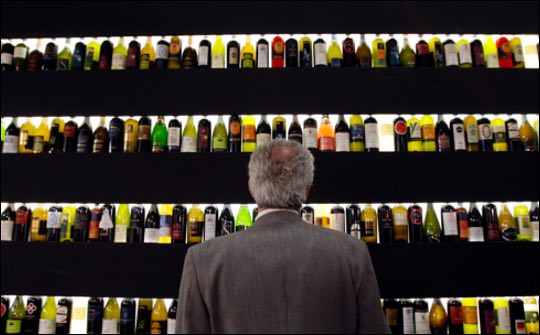
Yup, it’s confusing: sometimes a wine is named by the grape used to make it and sometimes it is named by the area that it is grown. Lots of time, there is no indication of the grape used in this second group – you are just somehow supposed to know.
So how does this break down and what are the few things you might want to remember?
I’ve written before about the seven noble grapes, or international grapes and I am going to constrain this article to those grapes (or else we will both go nuts). These grapes include: Chardonnay, Sauvignon Blanc, Riesling, Cabernet Sauvignon, Pinot Noir, Merlot and Syrah.
Let’s start with the simple ones. If the wine is a New World Wine, grown basically anywhere outside of Europe, it will be named by the grape used to make the wine. Yes, like all things in wine there are some exceptions, like those fancy marketing names and certain blends, but you should be able to find the grapes used to make the wine somewhere on the label.
That means America, Australian, Chilean, Argentinian and other new world locales will primarily use the grape to define their product. Good examples would be an Oregon Pinot Noir, a Napa Cabernet Sauvignon and a Chilean Chardonnay. It’s simple to order – name the grape and the country and your sommelier can find something you will like easily.
When we move to the Old World, things get more complex. Most of Europe uses the location of the vineyard to name their wines. This includes France, Italy Portugal and Spain, the larger wine producers in the Old World. That means you actually have to remember what grape is grown where to get what you’d like.
A simple summary (and it is not a complete set) of wines and where they are grown:
| Grape | Country | Regions |
| Chardonnay | France | Chablis Burgundy Champagne |
| Sauvignon Blanc | France Italy | Loire Valley Northern Italy Tuscany |
| Riesling | France Germany | Alsace Germany |
| Cabernet Sauvignon | France Italy | Bordeaux (Left Bank) SuperTuscans (Bolgheri) |
| Pinot Noir | France Germany | Burgundy Champagne Spatburgunder (Ahn) |
| Merlot | France Italy | Bordeaux (Right Bank) Super Tuscans (Bolgheri) |
| Syrah | France Italy | Northern Rhone Tuscany (Cortona) |
It’s also worth noting that I am only describing the classic locations and the classic grapes. There is always experimentation going on and grapes are being grown in new locations to see if they make a great wine.
One of the main grapes that gets confused is Chardonnay. Diners will ask for a chardonnay, and when the Sommelier proposes a nice Chablis, they reject it, forgetting that Chablis is actually made from the Chardonnay grape. Who could blame them? Sommeliers take years to accumulate all the knowledge of grapes and locations and flavor profiles. It’s not fair to expect someone with a life outside wine to recall it all.
Two notable exceptions are Rieslings from Germany and the wines of Alsace region of France. Both of these regions are nice enough to name their product by the grape. You will find German Rieslings, with clear indications of the location of the vineyard, because it does matter to the quality of the wine. Alsace, perhaps because of the German influences over the years also uses grape names for their world class Riesling, Gewürztraminer, Pinot Gris, Muscat and Pinot Noir. They also indicate more precise vineyard location as the quality of the wine increases.
It is confusing but perhaps you can remember two big rules:
- Old World uses places and New World uses grapes (except for the exceptions)
- Chablis is Chardonnay
Cheers!

